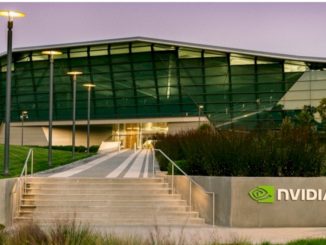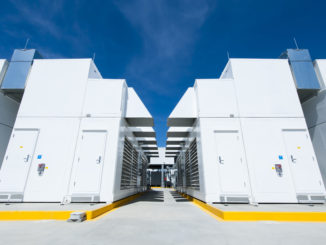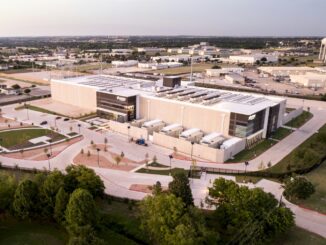
Perhaps the most interesting conversation that has happened so far in the White House in 2025, at least from the point of view of the IT sector, is when Nvidia co-founder and chief executive officer, Jensen Huang, put on his Sunday best suit and visited President Donald Trump to presumably talk about technology, AI, trade, and war on July 10.
Neither Nvidia nor the White House is saying what was discussed, but the end result was that late last night, Nvidia put out a statement saying that the US government would soon grant it licenses to begin reselling its crippled “Hopper” H20 GPU accelerator into China.
This is an amazing reversal, and it is very likely that we will never know exactly how Huang sweet-talked Trump into getting his way. But clearly, Huang did, and that means Nvidia can possibly reverse some of the $5.5 billion in writeoffs it announced in April when export controls by the US Commerce Department’s Bureau of Industry and Security were announced, halting sales. (Some of the H20s were converted into full-blown H100 and H200 GPU accelerators.)
But more importantly, and honestly very surprisingly, according to a statement that Nvidia put out late last night, the company will be able to resume sales into China, which was expected to account for around $30 billion in datacenter GPU sales in the fiscal 2026 year for Nvidia that started in February of this year. Nvidia has estimated that the total addressable market for datacenter GPUs in China to be $50 billion “in the future,” but did not qualify or quantify that further.
The Trump Administration – meaning the President himself – was pretty adamant about not shipping Nvidia and AMD GPUs into China, as a matter of principle. But, as we all know very well by now, Trump is open to make deals and likes to make deals, and if you make a deal that can give Trump something that he wants – and often it is the very idea that he made you make a deal – you can reverse what seems like a hard position, as many countries have learned from the trade wars and Trump’s combative use of tariffs.
Say what you will, but in many cases the hardball tactics of President Trump have worked to get companies to repatriate manufacturing to the United States if they are headquartered here or to expand their operations in America if they are not, although we still do not believe for a second that the tariffs were the point or that their cost is not ultimately and damned near entirely borne by consumers in the US.
And so, without question, Huang made a deal with Trump, or several deals, because that hardline and even reasonable position of not helping China become an even stronger AI superpower was reversed. Period.
Perhaps the fact that export controls didn’t work in the HPC realm played a part in the decision, something we have pointed out before. When the US put export controls on Intel accelerators that were being used by the national labs in China, the Chinese government fostered three different architectures and actually put two exascale-class supercomputers in the field – the Sunway “OceanLight” system and the “Tianhe-3” system – years before the US did based on the indigenous chips. These were etched by Semiconductor Manufacturing International Corp, the Chinese national foundry, using 14 nanometer technologies that were not even close to the bleeding edge of foundry processes at Taiwan Semiconductor Manufacturing Co, the world’s foundry, or its sometime rival Samsung, which has delivered 7 nanometer processes for server chips since 2021.
In recent days, after having been to the White House, Huang was on CNN talking to Fareed Zakaria, explaining that the Chinese military would never base its supercomputers on Nvidia technology, or indeed any other supplier of technology, because it could be “limited at any time.”
This is funny to us in that the third architecture for supercomputers that China chose is a licensed version of the “Naples” Epyc processor from none other than AMD, and that the Sunway “TaihuLight” supercomputer that is the predecessor of OceanLight is based on a licensed Alpha chip architecture. (OceanLight and TaihuLight hand vector cores off some beefy modified Alpha RISC cores as their compute engines.) There is speculation that the interconnects used in some of these machines are also licensed versions of InfiniBand technology, which has been tweaked by China. (Predating the Nvidia Mellanox acquisition by many years, obviously.)
This whole conversation about whether the Chinese military would deploy Nvidia or AMD GPUs for their supercomputers misses the whole point, unless there are backdoors in Nvidia and AMD GPUs. (If they don’t exist, it might be necessary to create them, eh?) But seriously, we do not think there are any backdoors in the GPUs or their drivers and the real point is that AI is the weapon as well as something that can be used to design and control weapons. These are two different functions.
To be explicit, you might outlaw AI here in the United States and Europe except for special governmental and enterprise use cases – just like we curb sales of GPUs and HBM memory today to China, North Korea, and Russia or we don’t let anyone and everyone have access to refined plutonium or uranium – and let AI loose in China to see what might happen to an economy that suddenly doesn’t need a third of its population to go to work. That would be one way to weaponize AI. We are not advocates of this strategy, obviously, but we do caution that we have to be mindful of unintended consequences with AI, and cooperative in a way that we have sometimes been able to do with military alliances and climate change initiatives.
To another way of thinking, the increased efficiency that comes with the use of AI tools is an economic weapon – perhaps the economic weapon – for an economic war, like tariffs seem to be the weapon of choice in the current trade war. If AI helps us make stuff cheaper, we get to sell more stuff, and if we have better AI, then those who don’t end up being the buyers (you hope) rather than the sellers.
It is perhaps more likely that Trump and Huang might have talked about how controlling AI is impossible at this point, and therefore the best strategy is to make as much money as possible right now selling GPUs and let the future sort itself out. In that scenario, getting China dependent on Nvidia and AMD GPUs rather than making their own is key.
The threat of withdrawal of GPU technology could be used as a lever – however short – to try to coerce control China.
We suspect that this is the thinking now, or rather, the words being said now privately between Trump and Huang now. We have no idea what anyone is really thinking because this game of chess being played is to say anything that gives the desired result. No matter, we are dubious that cutting off GPUs will be much of a threat in the long run. China will keep working on its own GPUs and XPUs just the same, and is not going to be controlled very easily, being the world’s second largest economy and military and with plenty of resources to grow even larger.
What seems most likely is that Trump has something else he wants or needs from China, and he is using the H20 card to negotiate with Xi Jinping, who in addition to being the Chinese president is also general secretary of the Chinese Communist Party and chairman of the Central Military Commission. Even if an H20 GPU is not very good compared to an Nvidia H100 or H200, much less a “Blackwell” B100 or B200, it is better in some respects than the “DaVinci” Ascend 910s that the HiSilicon division of Huawei Technology has created. And it has the virtue of being available in relatively high volumes from a reputable manufacturing chain that can make Hopper-class GPUs with very little loss. The story might not be the same with the Ascend 920 accelerators, as we wrote back in April when these export controls hit. The Ascend 920s, if the rumors and speculations are correct, will be able to beat the Nvidia H200s and not quite reach the B200s in terms of mixed precision floating point performance.
Perhaps the key thing that Huang and Trump discussed was how the memory capacity and the NVLink Switch memory interconnect for glomming together the GPUs was the key control point for the future of AI, with its mixture of expert models and test time compute approach to inference. And without any of that, all China can build is massive arrays of crippled H20 GPUs interconnected by, at best, maybe 200 Gb/sec or 400 Gb/sec Ethernet or InfiniBand networks.
It is a wonder, when you think about it, that there are not export controls on Ethernet and InfiniBand switch interconnects and especially NVLink Switch interconnects as well as the equivalent that is developing with UALink and SUE memory atomic interconnects from the UALink Consortium and Broadcom, respectively.
In the statement, Nvidia said that Huang was actually in Beijing meeting with government and industry officials “to discuss how AI will raise productivity and expand opportunity,” adding that the “discussions underscored how researchers worldwide can advance safe and secure AI for the benefit of all.”
The statement added that Huang provided an update to Chinese customers, saying that the company is filing applications to sell the H20 GPU again and that the US government “has assured Nvidia that licenses will be granted” and that “Nvidia hopes to start deliveries soon.” Huang added that a new, fully export-compliant RTX Pro GPU that “is ideal for digital twin AI for smart factories and logistics” was being created for the Chinese market, too.
Comments are closed.





This is an incredible written article. I wondered for years when Jensen would meet Trump. This gives us a peek of what might have gone down, & definitely game me a peak behind the curtain.